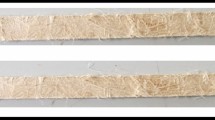Abstract
Pyrolysis has the potential of transforming waste into recyclable products. Pyrolytie carbon black (PCB) is one of the most important products from the pyrolysis of used tires. Techniques for surface modifications of PCB have been developed. One of the most significant applications for modified PCB is to reinforce the rubber matrix to obtain high added values. The transverse relaxation and the chain dynamics of vulcanized rubber networks with PCB and modified PCB were studied and compared with those of the commercial carbon blacks using selective 1H transverse relaxation (T 2) experiments and dipolar correlation effect (DCE) experiments on the stimulated echo. Demineralization and coupling agent modification not only intensified the interactions between the modified PCB and the neighboring polyisoprene chains, but also increased the chemical cross-link density of the vulcanized rubber with modified PCB. The mechanical testing of the rubbers with different kinds of carbon blacks showed that the maximum strain of the rubber with modified PCB was improved greatly. The mechanical testing results confirmed the conclusion obtained by nuclear magnetic resonance (NMR). PCB modified by the demineralization and NDZ-105 titanate coupling agent could be used to replace the commercial semi-reinforcing carbon black.
Similar content being viewed by others
References
Blümich, B., 2000. NMR Imaging of Materials. Clarendon Press, Oxford.
Darmstadt, H., Roy, C., 1994. ESCA characterization of commercial carbon blacks and of carbon blacks from vacuum pyrolysis of used tires. Carbon, 32(8):1399–1405. [doi:10.1016/0008-6223(94)90132-5]
Fuad, M.Y.A., Ismail, Z., 1995. Application of rice husk ash as fillers in polypropylene: effect of titanate, zirconate and silane coupling agents. European Polymer Journal, 31(9):885–893. [doi:10.1016/0014-3057(95)00041-0]
Garbarezyk, M., Grinberg, F., Nestle, N., Kuhn, W., 2001. A novel NMR approach to the determination of the cross-link density in rubber materials with the dipolar correlation effect in low magnetic fields. J. Polym. Sci. B, 39(18):2207–2216. [doi:10.1002/polb.1194]
Gebauer, M., Schermaul, D., Timm, D., 1995. Olefins from polyolefin wastes. Chem. Tech., 47:195.
Gonzalez, F., Encinar, M., Canito, L., Rodriguez, J., 2001. Pyrolysis of automobile tyre waste. Influence of operating variables and kinetics study. Journal of Analytical and Applied Pyrolysis, 58:667–683. [doi:10.1016/S0165-2370(00)00201-1]
Grinberg, F., Kimmich, R., 1995. Characterization of order fluctuations in liquid crystals by the dipolar-correlation effect on the stimulated echo. J. Chem. Phys., 103(1):365–370. [doi:10.1063/1.469603]
Grinberg, F., Garbarezyk, M., Kuhn, W., 1999. Influence of the cross-link density and the filler content on segment dynamics of dry and swollen natural rubber studied by the NMR dipolar-correlation effect. J. Chem. Phys., 111(24):11222–11231. [doi:10.1063/1.480478]
Grinberg, F., Heidenreich, M., Kuhn, W., 2002. A new contrast parameter for visualization of the cross-link density in rubber based on the dipolar-correlation effect. Journal of Magnetic Resonance, 159(1):87–91. [doi:10.1016/S1090-7807(02)00007-1]
Litvinov, V.M., Steeman, P.A.M., 1999. EPDM-carbon black interactions and the reinforcement mechanisms, as studied by low-resolution 1H NMR. Macromolecules, 32(25):8476–8490. [doi:10.1021/ma9910080]
Litvinov, V.M., de Prajna, P., 2002. Spectroscopy of Rubber and Rubbery Materials. Rapra Technology Ltd., Shawbury, Shrewsbury, Shropshire, UK.
Lü, J., Yang, Y.R., Chen, B.C., 2002. Surface analysis and characterization of carbon black from pyrolysis of used tires. J. Environmental Science, 22:637–640.
Merchant, A.A., Petrich, M.A., 1993. Pyrolysis of used tyres and conversion of carbons to activated carbon. J. Am. Chem. Soc., 39:1370–1376.
Roy, C., Darmstadt, H., 1997. Characterization of naphtha and carbon black obtained by vacuum pyrolysis of polyisoprene rubber. Fuel Pro. Techn., 50(1):87–103. [doi:10.1016/S0378-3820(96)01044-2]
Williams, P.T., Besler, S., Taylor, D.T., 1993. The batch pyrolysis of tyre waste-fuel properties of the derived pyrolytic oil and overall plant economics. Proc. Inst. Mech. Eng., 207:55–63.
Zhou, J., Yang, Y.R., 2004. Intensification of adsorption process by using the pyrolytic carbon from waste tires to remove chromium (VI) from wastewater. J. Environmental Science, 16:1016–1019.
Author information
Authors and Affiliations
Additional information
Project supported by the National Natural Science Foundation of China (Nos. 20490200 and 20176051), and the Project Based Personnel Exchange Program with the China Scholarship Council and the German Academic Exchange Service
Rights and permissions
About this article
Cite this article
Zhou, J., Yang, Yr., Ren, Xh. et al. Investigation of reinforcement of the modified carbon black from wasted tires by nuclear magnetic resonance. J. Zhejiang Univ. - Sci. A 7, 1440–1446 (2006). https://doi.org/10.1631/jzus.2006.A1440
Received:
Accepted:
Published:
Issue Date:
DOI: https://doi.org/10.1631/jzus.2006.A1440
Key words
- Pyrolytic carbon black (PCB)
- Nuclear magnetic resonance (NMR)
- Relaxation
- Dipolar correlation effect (DCE)
- Reinforcement




